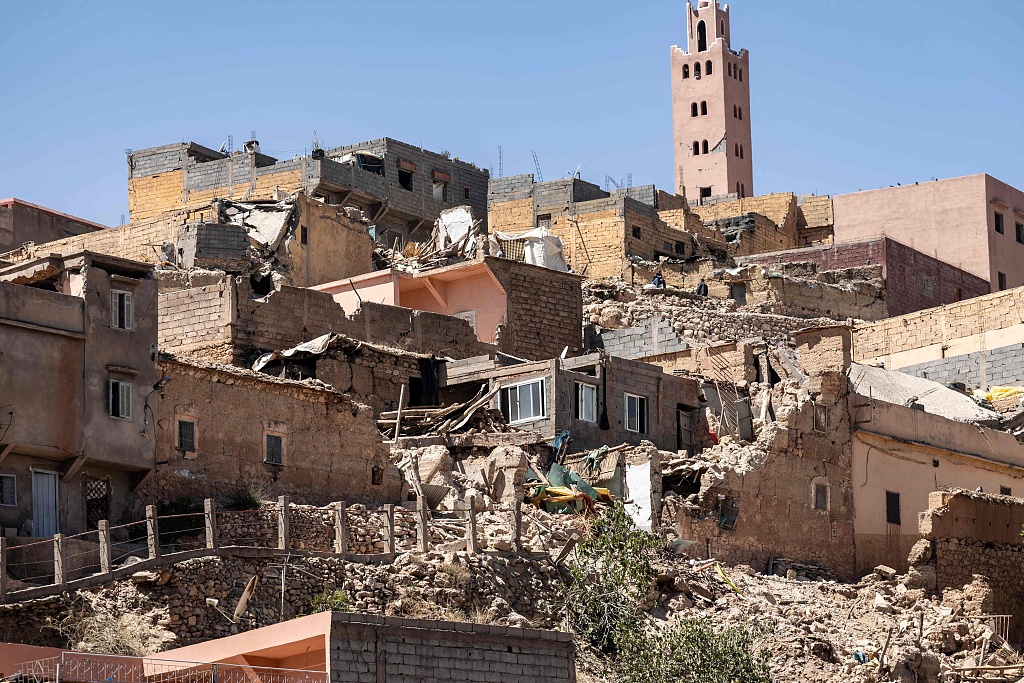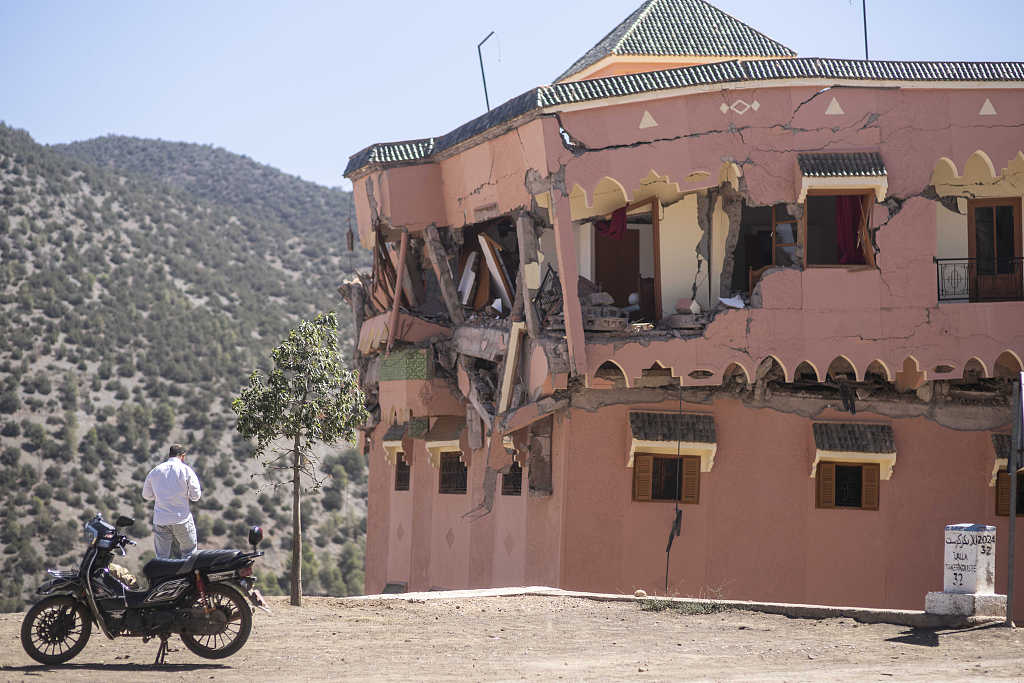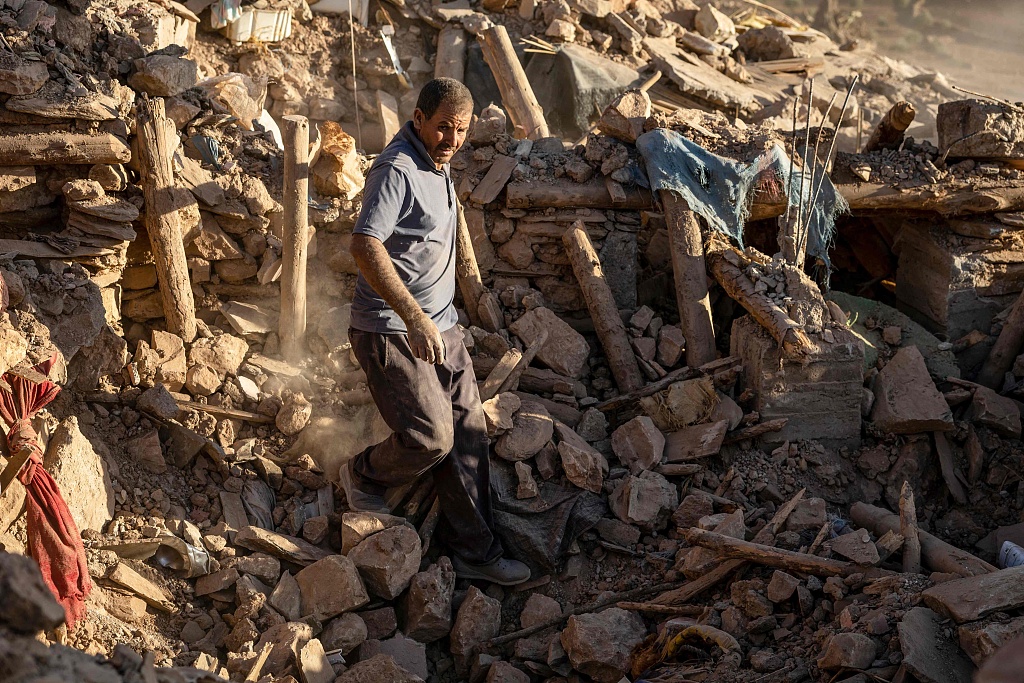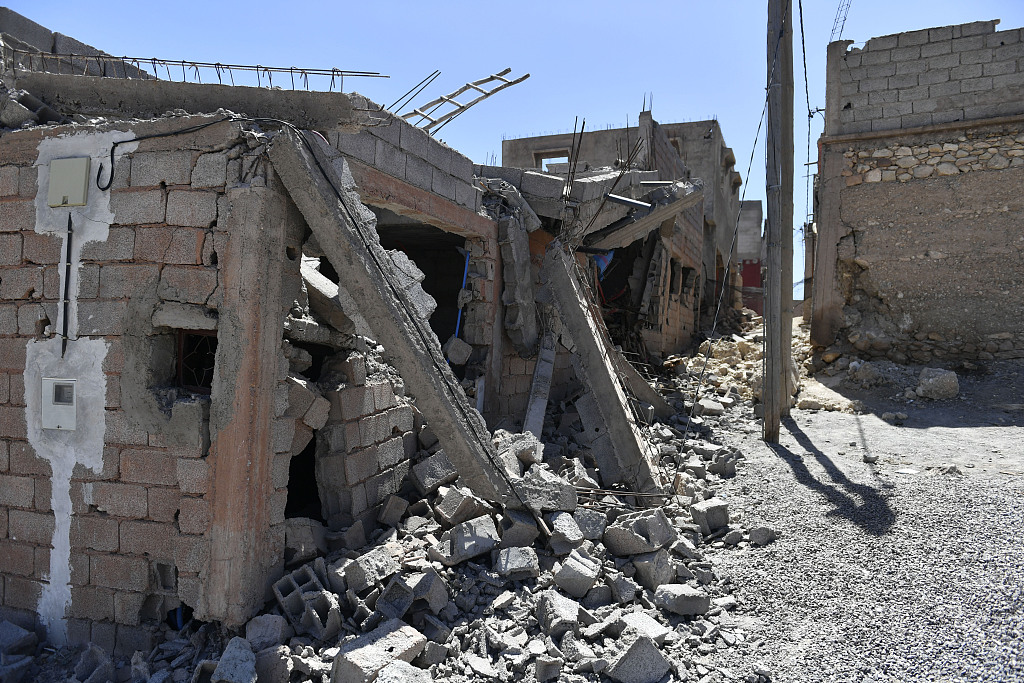The powerful earthquake that struck Morocco late Friday, killing more than 2,000 people and smashing numerous buildings and homes, didn't hit in the most active seismological region, according to a French expert.
However, Philippe Vernant, a specialist in active tectonics at the University of Montpellier, warned that aftershocks can be expected.
Why was the Morocco quake so devastating?
The magnitude of the Morocco quake was 6.8, which corresponds roughly to an average displacement on the fault line of around one meter in a few seconds, over several kilometers, said Vernant.
"Obviously, this shakes the region enormously. Then there's the depth: at first it was estimated to be at around 25-30 kilometers, but it seems to be going back up, closer to 10 kilometers," Philippe added. "The closer you get to the surface, the greater the effect of the rupture."

The minaret of a mosque stands behind damaged or destroyed houses following an earthquake in Moulay Brahim, Al-Haouz province, Morocco, September 9, 2023. /CFP
The minaret of a mosque stands behind damaged or destroyed houses following an earthquake in Moulay Brahim, Al-Haouz province, Morocco, September 9, 2023. /CFP
The city's famous Koutoubia Mosque, built in the 12th century, was damaged, but the extent was not immediately clear. Its 69-meter minaret is known as the "roof of Marrakech." Moroccans also posted videos showing damage to parts of the famous red walls that surround the old city, a UNESCO World Heritage site.
"The problem is that where destructive earthquakes are rare, buildings are simply not constructed robustly enough to cope with strong ground shaking, so many collapse, resulting in high casualties," said Bill McGuire, professor emeritus of geophysical and climate hazards at University College London.

A man stands next to a damaged hotel after the earthquake in Moulay Ibrahim village, near the epicenter of the earthquake, outside Marrakech, Morocco, September 9, 2023. /CFP
A man stands next to a damaged hotel after the earthquake in Moulay Ibrahim village, near the epicenter of the earthquake, outside Marrakech, Morocco, September 9, 2023. /CFP
Aftershocks in Morocco are expected
"Aftershocks are bound to occur. Even if they are less strong, they can lead to the collapse of buildings already weakened by the earthquake," said Vernant, the French expert.
He took Türkiye's earthquake as an example.
"In Türkiye, one earthquake triggered another. The first tear can lead to the rupture of another fault through a cascade effect, which is why there is sometimes a risk of a stronger earthquake after the first one," he explained.

A villager searches for survivors amidst the rubble after an earthquake in the mountain village of Tafeghaghte, southwest of the city of Marrakesh, Morocco, September 9, 2023. /CFP
A villager searches for survivors amidst the rubble after an earthquake in the mountain village of Tafeghaghte, southwest of the city of Marrakesh, Morocco, September 9, 2023. /CFP
Huge damage caused by the quake
The epicenter of Friday's tremor was near the town of Ighil in Al Haouz Province, roughly 70 kilometers south of Marrakech. Al Haouz is known for scenic villages and valleys tucked in the High Atlas Mountains.
Police, emergency vehicles and people fleeing in shared taxis spent hours traversing unpaved roads through the High Atlas in stop-and-go traffic, often exiting their cars to help clear giant boulders from routes known to be rugged and difficult long before Friday's earthquake. In Ijjoukak, a village in the area surrounding Toubkal, North Africa's tallest peak, residents estimated nearly 200 buildings had been leveled.
Couch cushions, electric cords and grapes were strewn in giant piles of rubble alongside dead sheep, houseplants and doors wedged between boulders. Relatives from the town and those who had driven from major cities cried while they wondered who to call as they reckoned with the aftermath and a lack of food and water.

Buildings are destroyed after a deadly earthquake in Marrakesh, Morocco, September 9, 2023.
Buildings are destroyed after a deadly earthquake in Marrakesh, Morocco, September 9, 2023.
History of earthquakes in North Africa
Earthquakes are relatively rare in North Africa. Lahcen Mhanni, head of the Seismic Monitoring and Warning Department at the National Institute of Geophysics, told 2M TV that the earthquake was the strongest ever recorded in the region.
In 1960, a magnitude-5.8 tremor struck near the Moroccan city of Agadir and caused thousands of deaths. That quake prompted changes in construction rules in Morocco, but many buildings, especially rural homes, are not built to withstand such tremors.
In 2004, a magnitude-6.4 earthquake near the Mediterranean coastal city of Al Hoceima left more than 600 people dead.
Friday's quake was felt as far away as Portugal and Algeria, according to the Portuguese Institute for Sea and Atmosphere and Algeria's Civil Defense agency, which oversees emergency response.
(With input from AP and AFP)
(If you have specific expertise and want to contribute, or if you have a topic of interest that you'd like to share with us, please email us at nature@cgtn.com.)